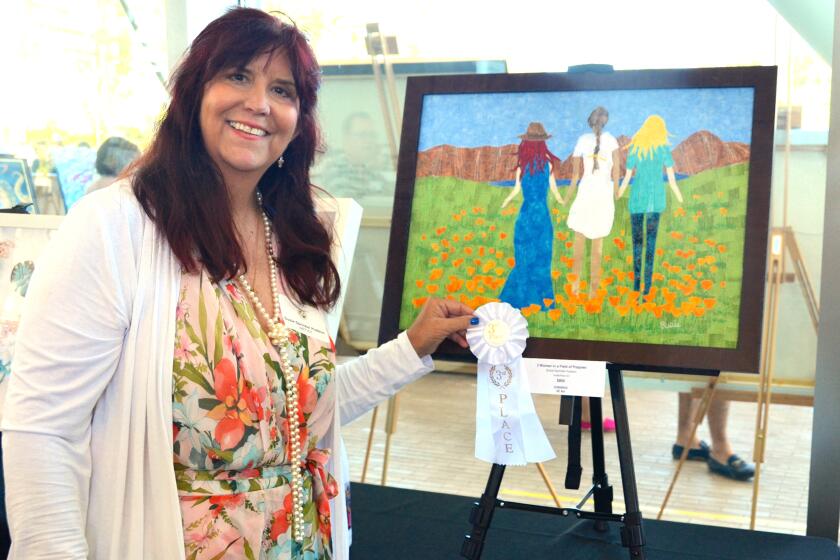Coast Summit panel examines successes of marine protected areas

- Share via
The Coast Film and Music Festival first came to Laguna Beach in 2019, but the topical panel discussions of the Coast Summit debuted a year ago.
Largely focused on issues of adventure, environmental conservation and sustainability, those conversations returned to town on Nov. 14 at the Rivian South Coast Theater.
A panel focused on balancing marine protection efforts with the needs of coastal communities addressed a situation that had come to life right outside the front door of Laguna residents.
The Laguna Beach State Marine Reserve, which was established in January 2012, totals 6.72 miles and protects 4.4 miles of the local shoreline, according to the California Department of Fish and Wildlife.

Marine reserves have the highest level of protection, as fishing and collecting are not allowed within those areas. The Laguna Beach State Marine Reserve is one of four consecutive marine protected areas that cover an estimated 14 miles of coastal habitat between Corona del Mar State Beach and Dana Point.
Chad Nelsen, the chief executive of the Surfrider Foundation and a Laguna Beach native, looked back on his youth in the 1980s.
“I was endlessly curious about what was going on out there, so I started free diving and scuba diving and fishing and spearfishing, and my buddies and I couldn’t really catch any fish,” Nelsen said. “We thought we were just bad at it. We talked to the older lifeguards, guys who had been around here in the ’50s and ’60s, and they just looked at us matter-of-factly and said, “It’s fished out.”
Since the creation of the local marine reserve, Nelsen said the area is “unrecognizable” from when he was growing up.

“It is teeming with fish,” Nelsen said. “There’s lobsters under every rock, and the kelp beds are flourishing, so it’s actually a real conservation success story. I raised my kids in town, too, and they grew up in a healthier ocean offshore here than I did. It shows the effectiveness of these marine protected areas. It turns out if you leave nature alone, it does a great job by itself to come back.”
While important marine habitats are eyed by conservationists and fishermen alike, the panel indicated that a broad spectrum of the public can make a difference in their communities.
The nine-day celebration includes 15 feature films, 53 shorts, musical performances, workshops, Q&A sessions and outdoor activities.
Chugey Sepulveda, director of research and education at Pfleger Institute of Environmental Research, emphasized the need for consumers to consider where their fish is coming from.
“I think as a consumer, we need to treat the ocean more like a farmer’s market,” Sepulveda said. “Up until now, as a consumer, we go into a restaurant and we’d say, ‘I’m feeling like having some Chilean sea bass. How about you?’ And actually, that sea bass is not local. There’s a huge carbon footprint associated with just getting it here, and who knows which nation caught it? … But what we do know is there’s a local fisherman starving. He cannot make ends meet, and we have some fantastic chefs. …
“For the consumer, I think that it’s really important that we look to our local resources and we try to get away from the mentality of ‘I want what I want when I want it.’ We need to be more receptive to what’s available.”

Keith Malloy, a film director and surfer that participated in the discussion, simplified the question of where a fish had been caught.
“I think the most respectful way to eat meat or fish, if you’re going to do it, is actually taking the life yourself because you realize how sacred and special that is,” Malloy said.
The festival, which ran from Nov. 9 through 17, included 15 feature screenings and 53 short films. The Festival of Arts, Laguna Beach Cultural Arts Center, and Hobie Surf Shop were also venues during the nine-day event.
A “Films on Forest Avenue” also debuted at the festival on Nov. 14, providing film screenings and live music on the promenade.
All the latest on Orange County from Orange County.
Get our free TimesOC newsletter.
You may occasionally receive promotional content from the Daily Pilot.





